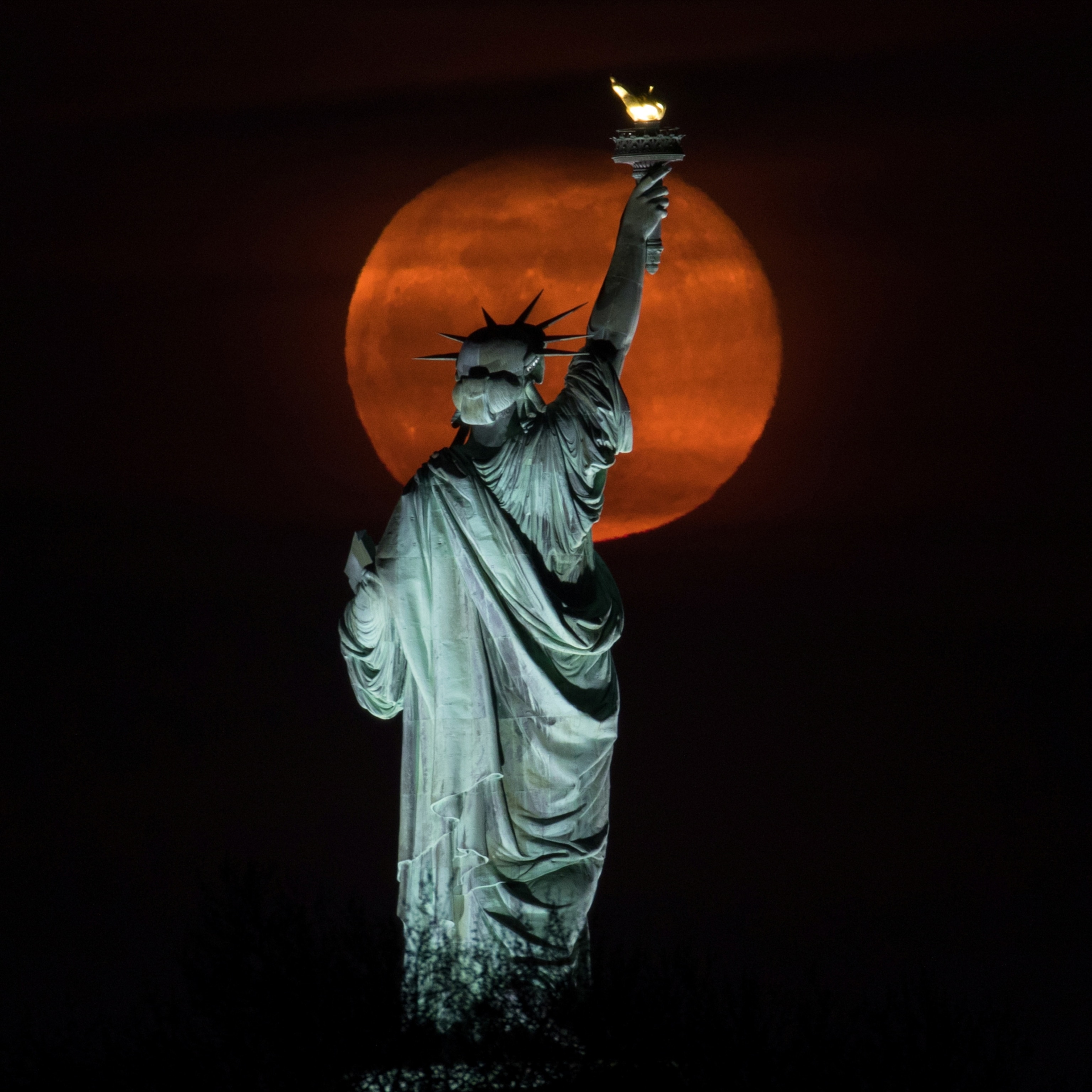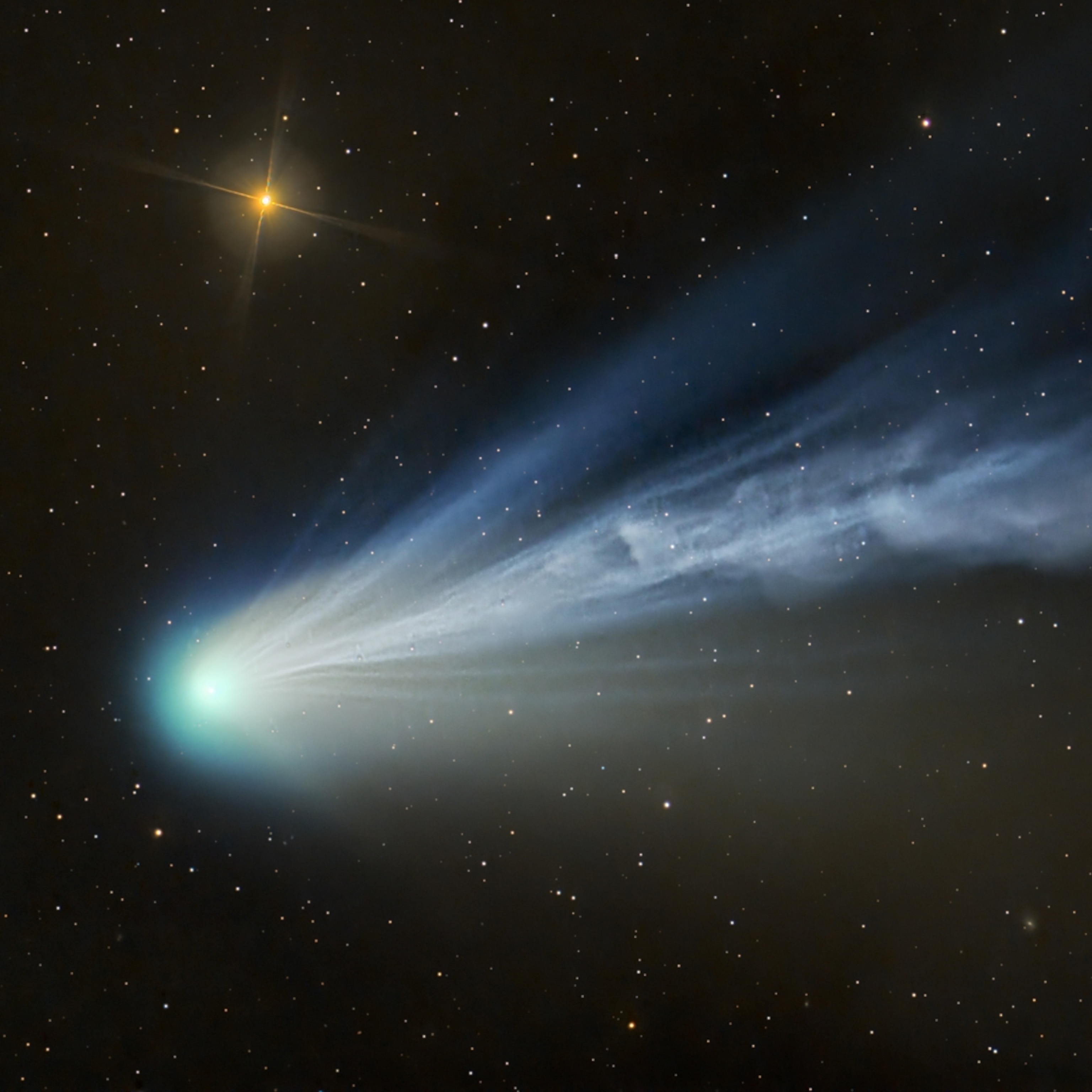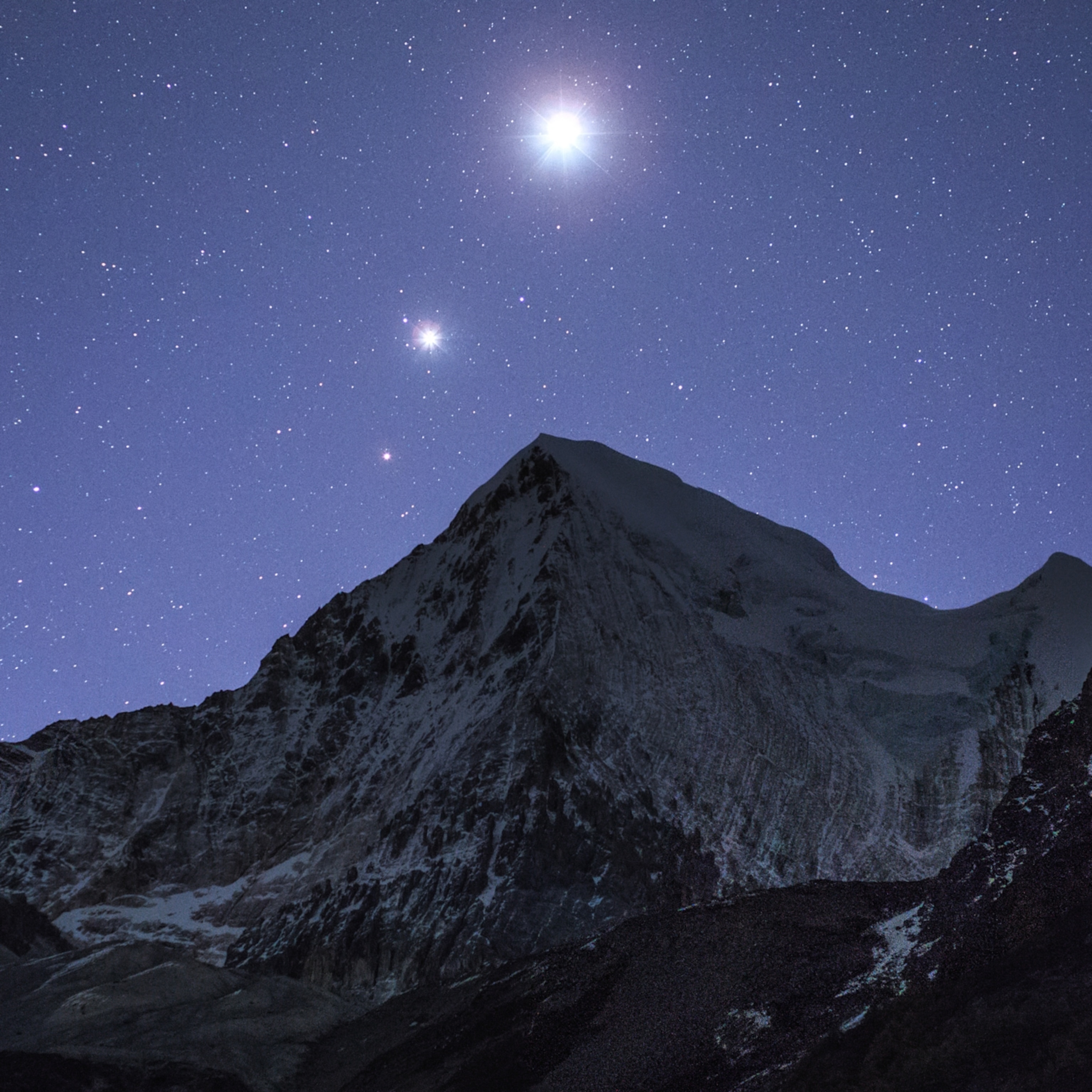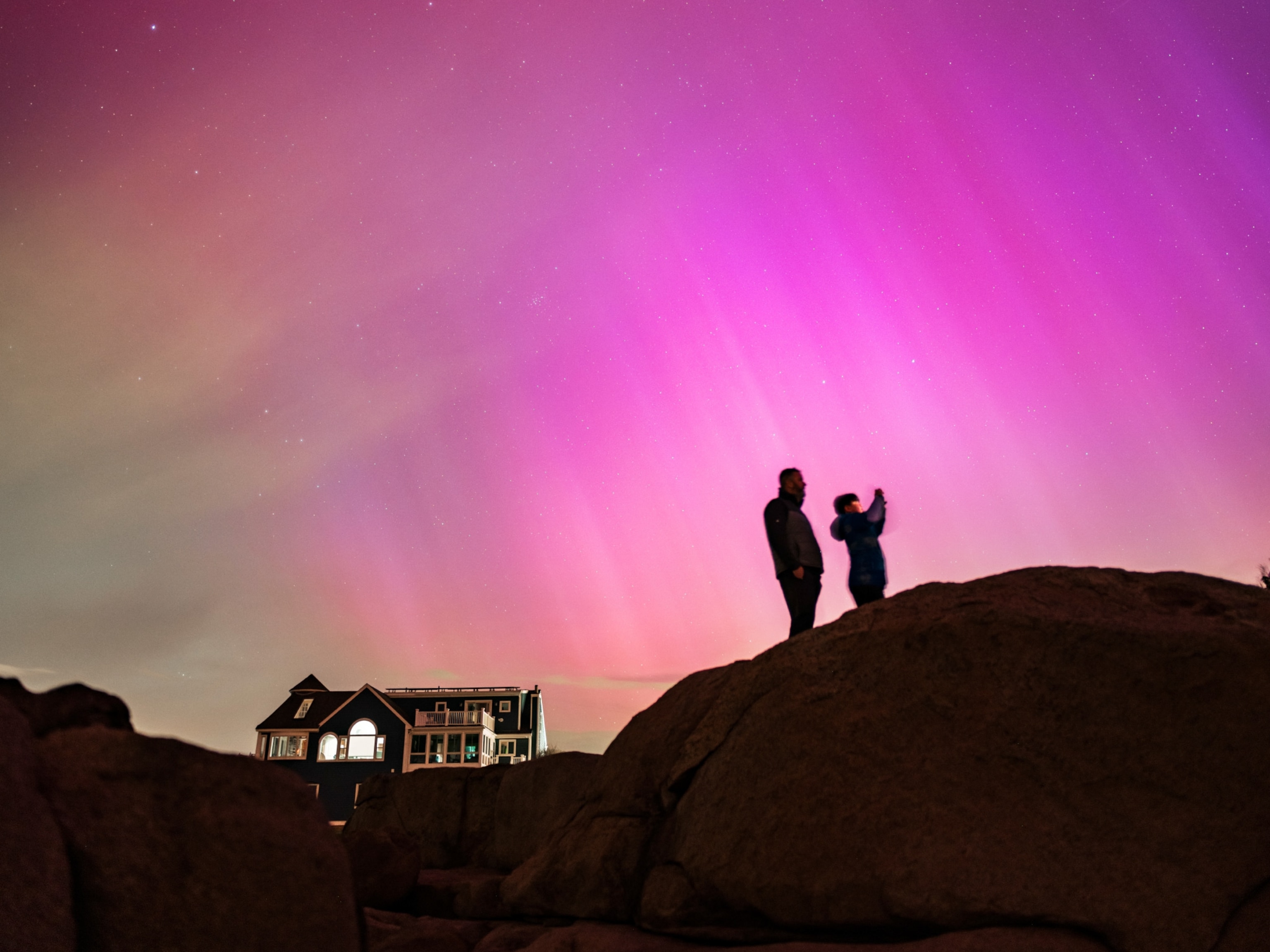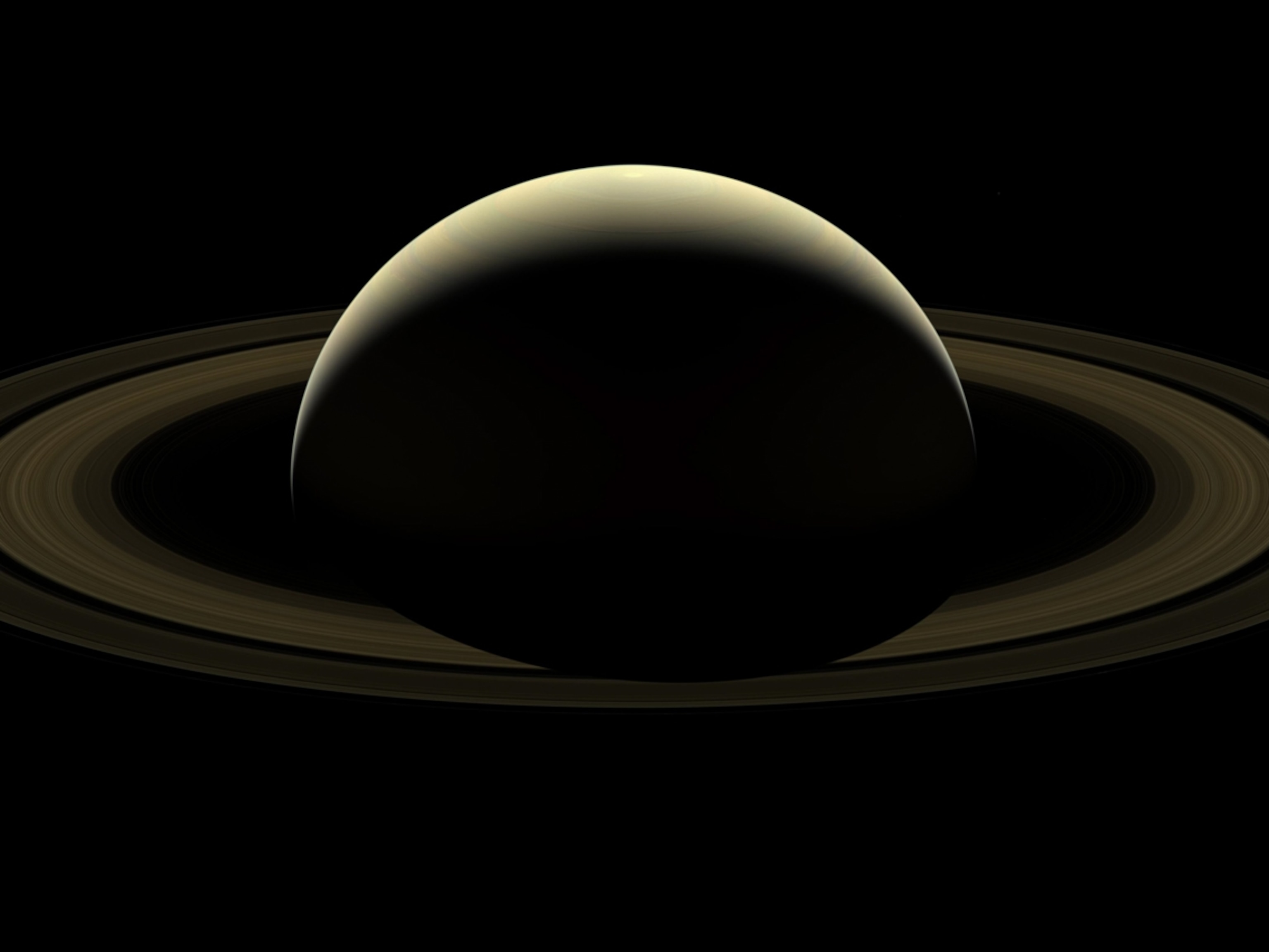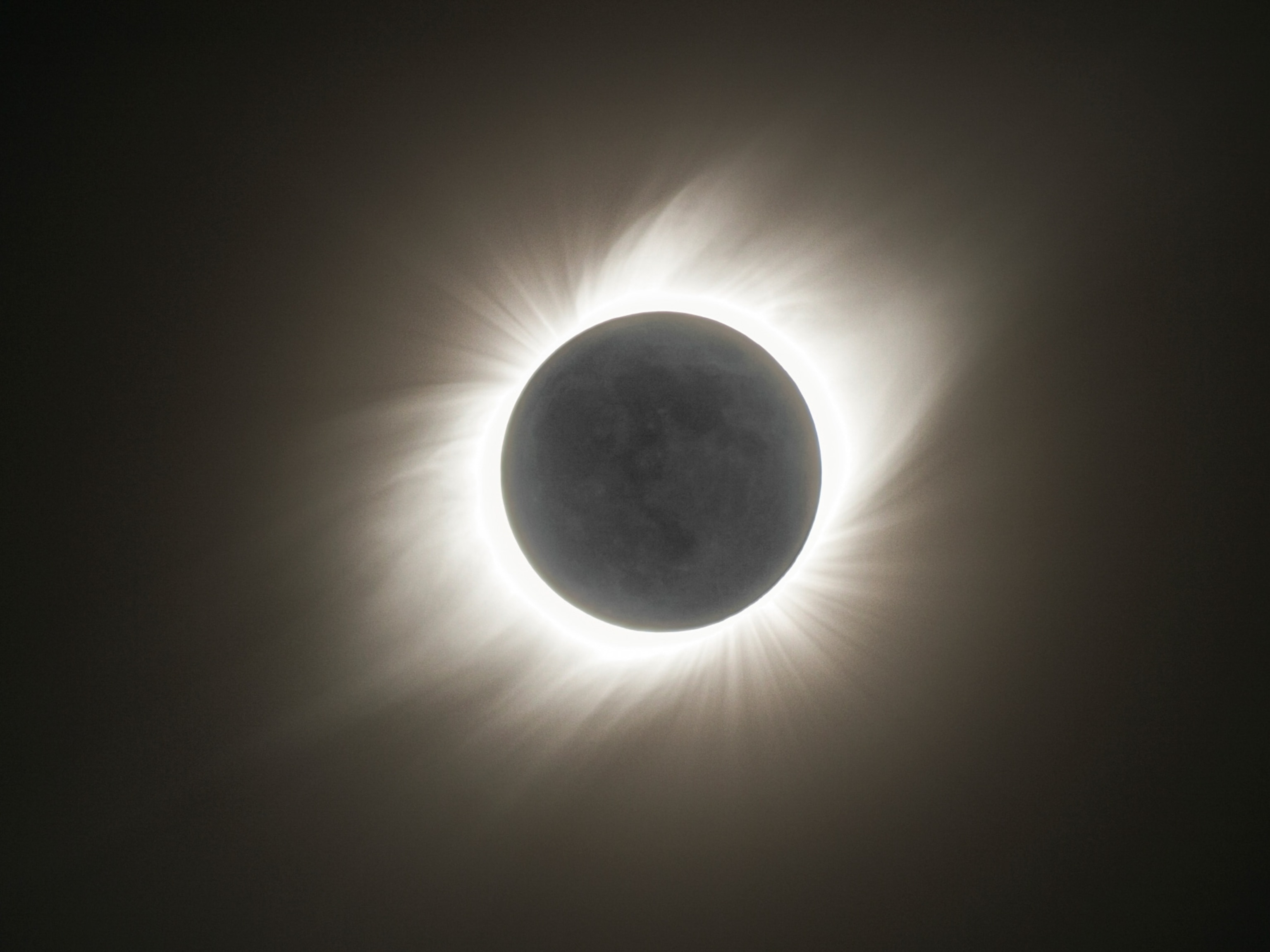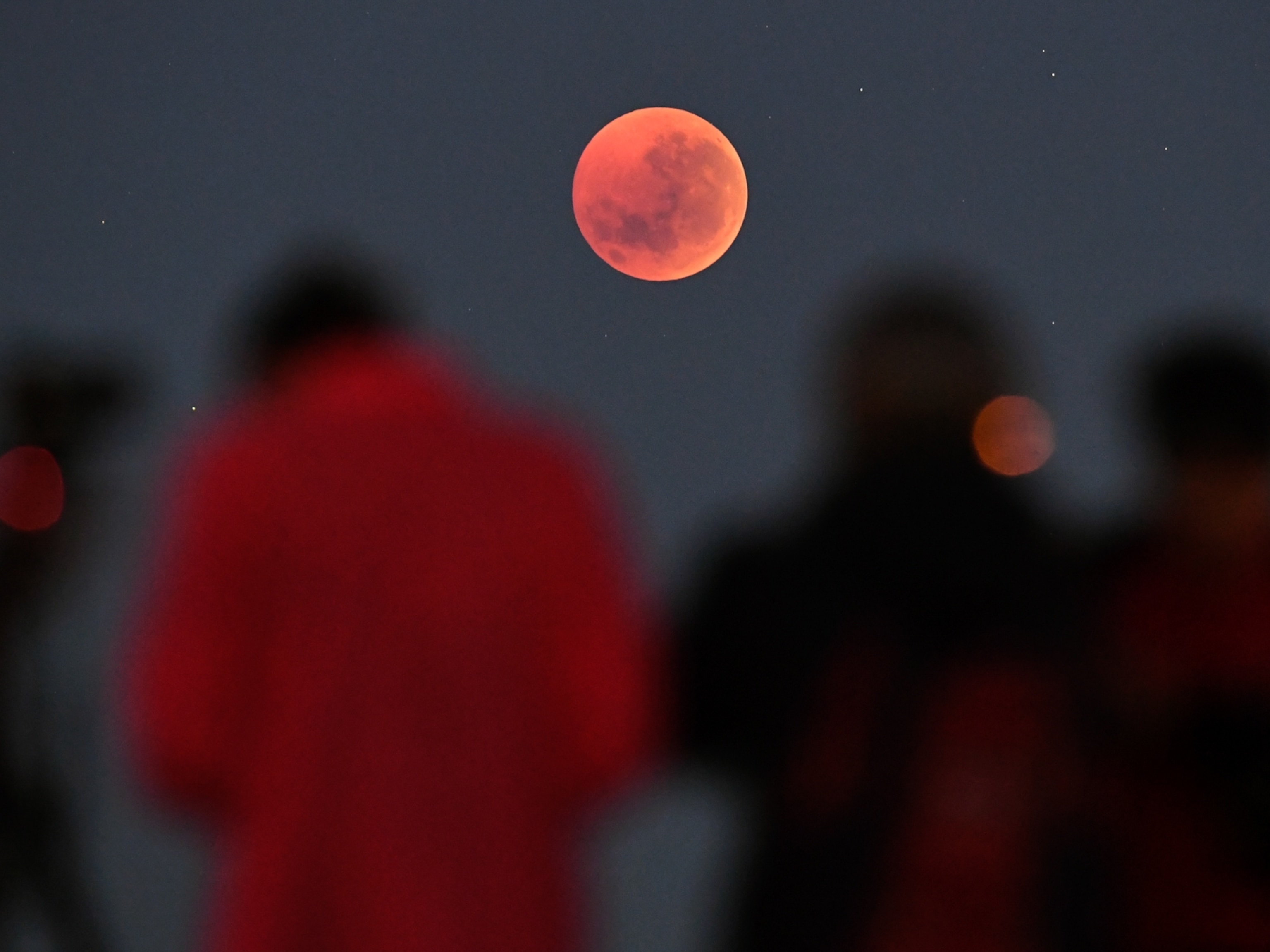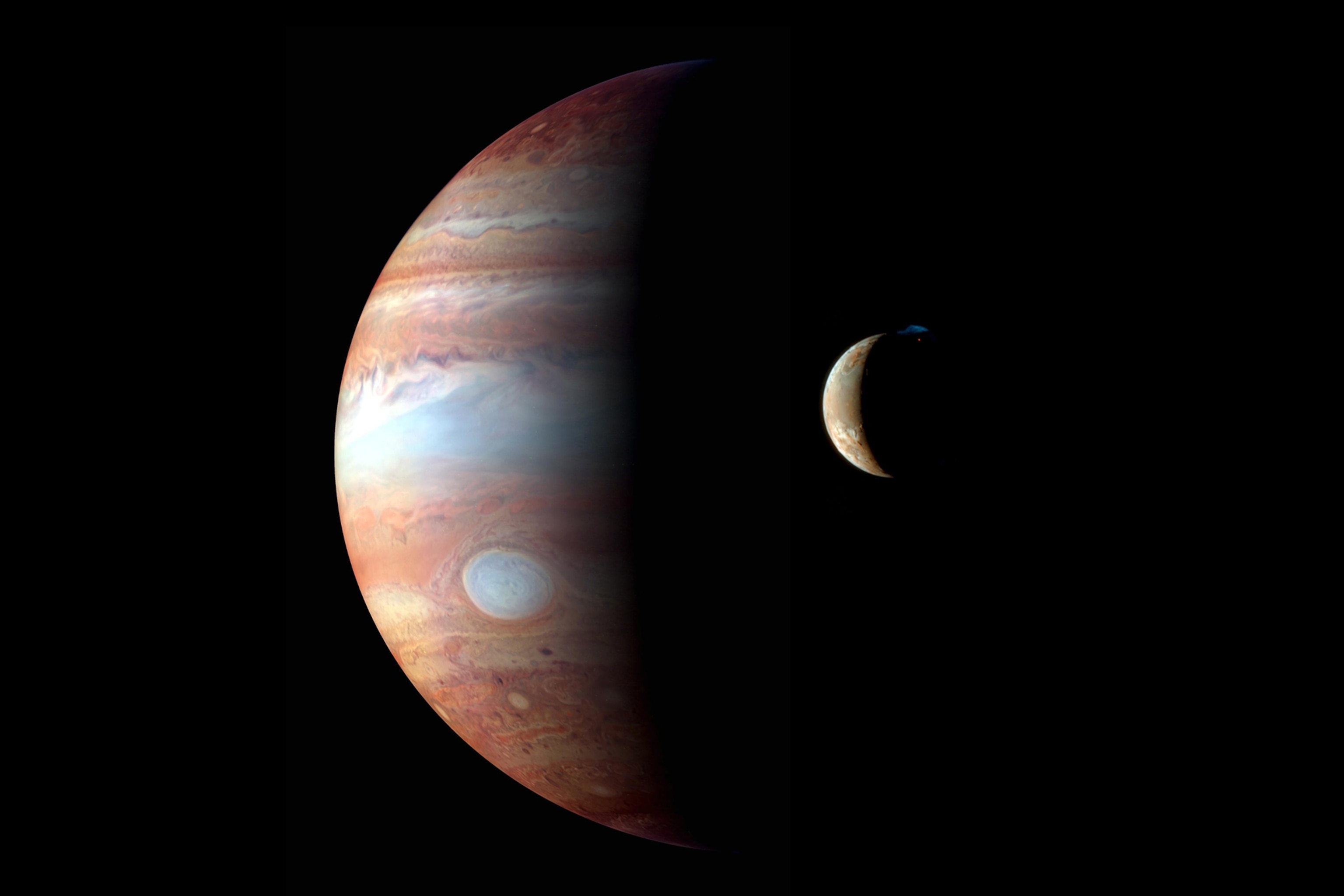
Jupiter Looms Large and 9 More Can’t-Miss Sky Events in April
This month, see the moon join up with constellations and planets and Jupiter at its brightest.
The smallest and largest and planets in the solar system put on their best sky shows this month, the moon makes a host of stunning celestial visits with neighboring worlds, and a meteor shower lights up the sky.
So dust off those binoculars, and mark your April calendar!
Mercury at Primetime—April 1
Mercury makes its best appearance of 2017 as it reaches its greatest elongation–or its greatest distance from the sun–as seen from Earth. You can see this faint star-like planet if you’re in the northern hemisphere (especially across cities like Beijing, Istanbul, London, Rome, San Francisco and Washington D.C.) and it will appear at sunset about a fist-width, or 12 degrees, above the southwest horizon. A half-hour after sunset, Mercury will have sunk to about 7 degrees in altitude. As a bonus, fainter ruddy Mars appears to its upper left.
Don’t wait to hunt down this most elusive of naked-eye planets, because by a week later it will be significantly dimmer and lower in the twilight sky, making it much trickier to observe.
Moon Hits Bull’s Eye—April 1
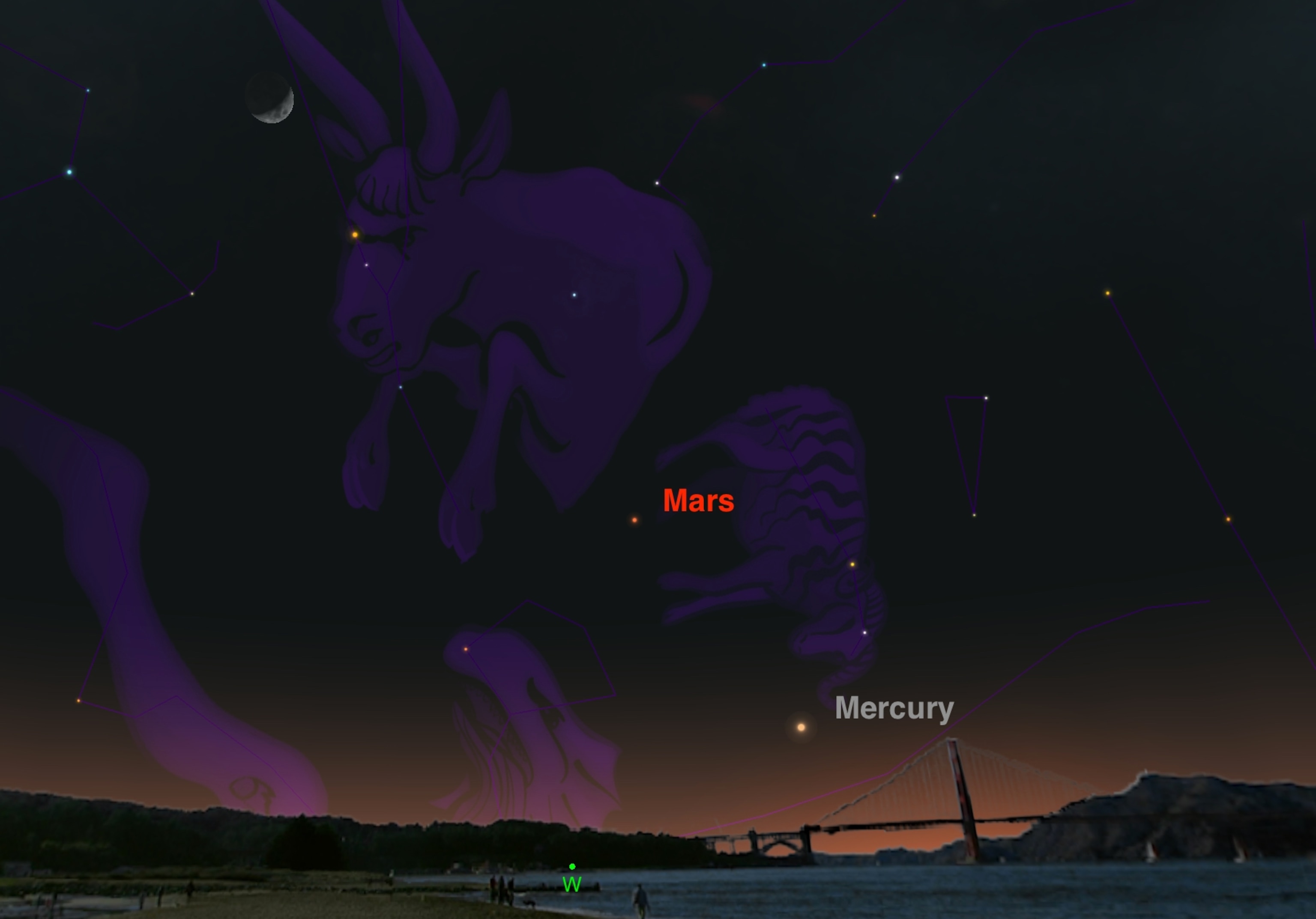
As dusk approaches, look for a waxing crescent moon pairing up with the bright orange star Aldebaran in the high southwest sky. The 66 light-year distant red giant marks the red eye Taurus the bull in the constellation of the same name.
Regardless of your observing location, the cosmic duo will be eye-catching as the two objects appear within 5 degrees of each other–or less than the width of your three middle fingers held at arm’s length.
Look carefully, and you may also notice that the moon is near the V-shaped Hyades star cluster–the face of a mythical bovine.
If you find yourself in a brightly-lit city or suburb, try using binoculars to pick out all the stars in this 160-light-year distant cluster.
Leo’s Heart Meets Moon—April 6
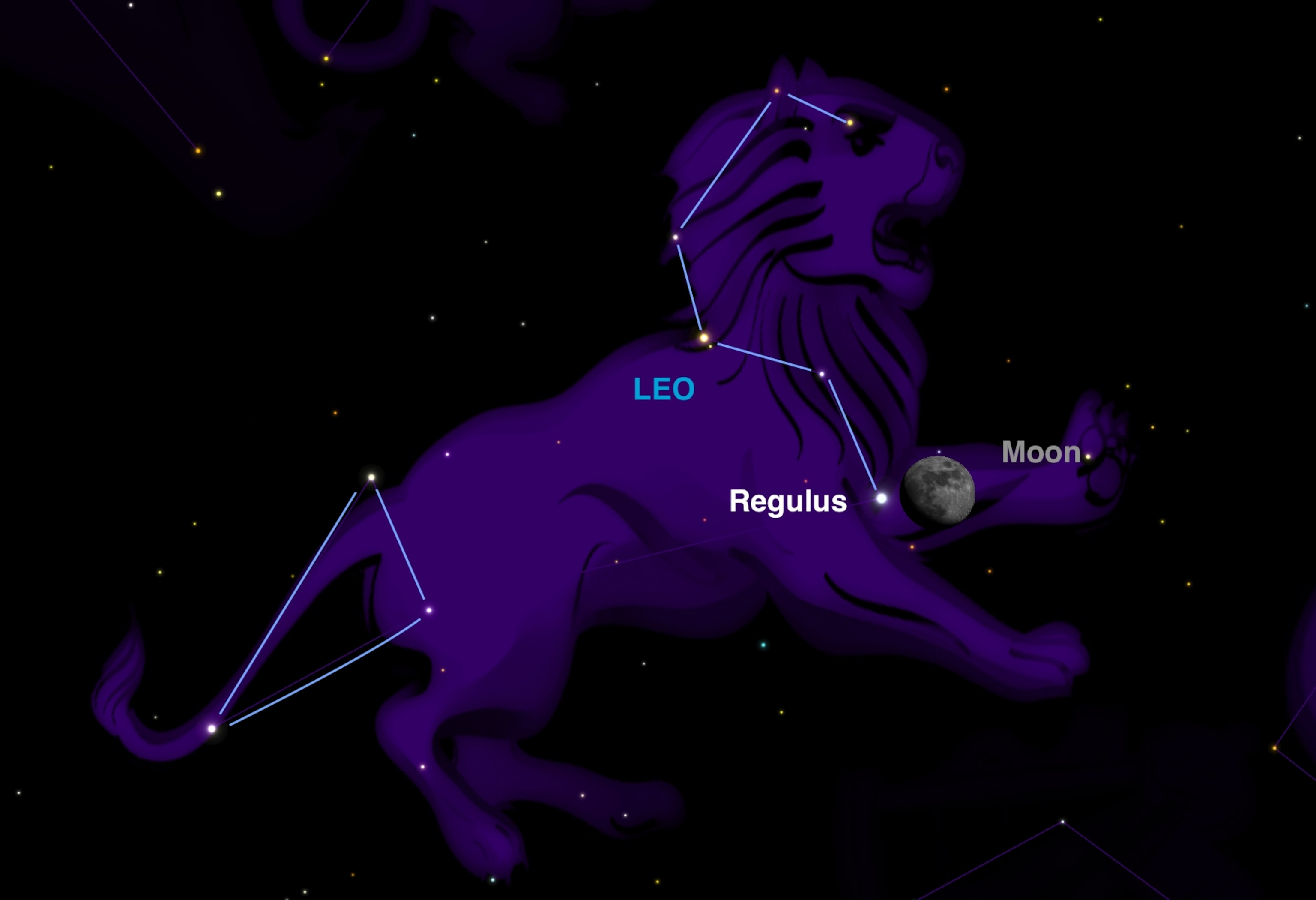
The waxing gibbous moon passes very close to the brightest stellar member of the constellation: Leo, the lion. You will find the brilliant blue-white star Regulus only a degree away from the moon.
Using your thumb to hide the moon’s disc and block its associated glare, see if you can spot the distinctive backwards question-mark-shaped pattern of stars that mark the head of the cosmic cat.
Jupiter at Its Best—April 7
Look for Jupiter to be at its best and brightest of the entire year.
The largest planet in the solar system officially reaches opposition—meaning it is on the opposite side of the sky from the sun—and will appear to be the largest disc in the sky, visible from sundown to sunrise. For Jupiter, opposition also means that this is the closest the planet will come to Earth, at 414 million miles. This will make it stunningly bright, outshining even than the nearby brilliant star Spica.
Make sure to check out its retinue of moons through binoculars, as well as Jupiter’s own complex atmospheric details through a small telescope. For those with larger backyard telescopes, watch for the famed Great Red Spot to pop into view as the planet spins on its axis. This cyclonic storm is twice the size of Earth and has been raging for at least three centuries.
Moon Joins Jupiter—April 10
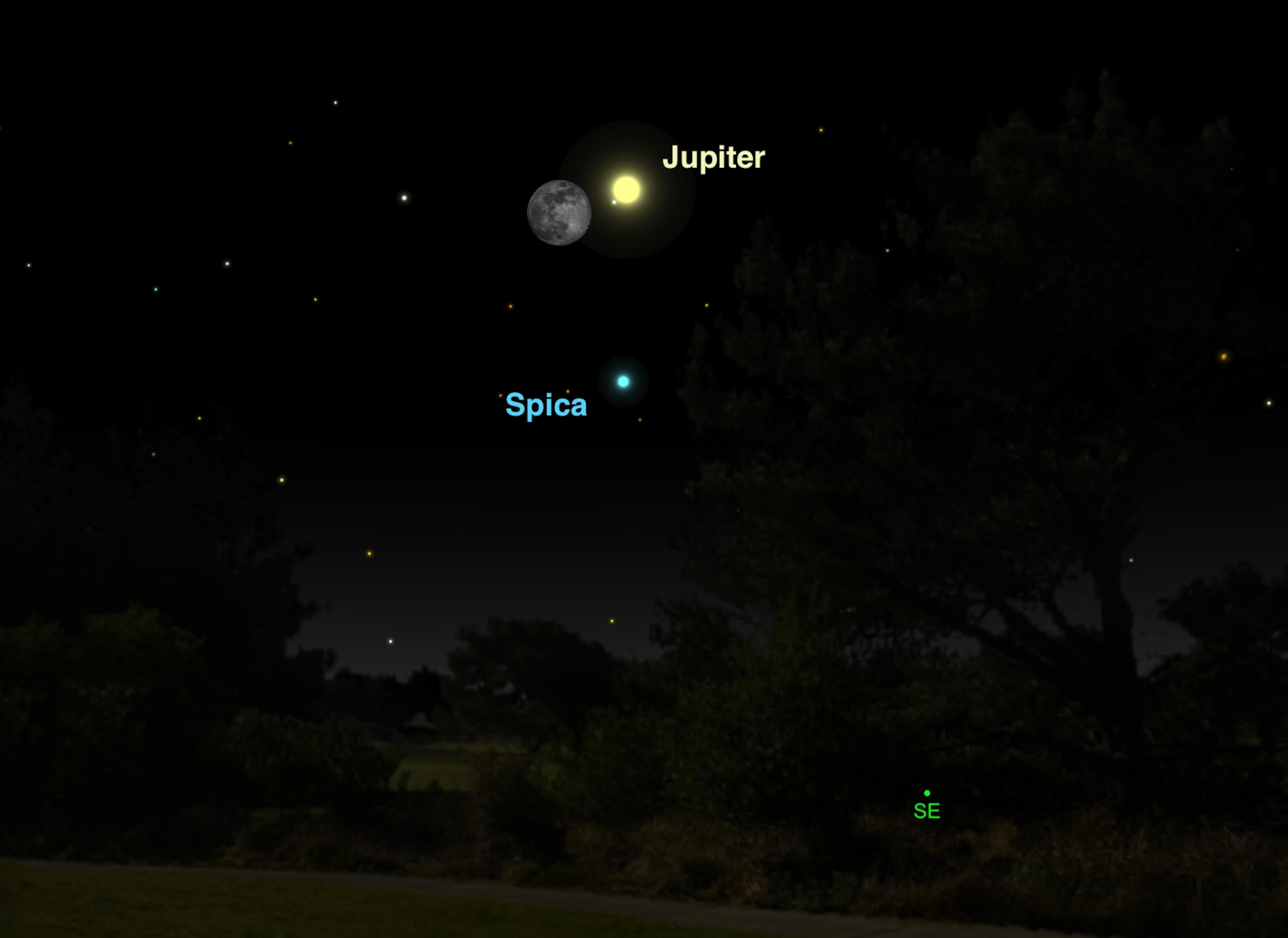
A few days after the date of its opposition, Jupiter continues to dominate the sky, and tonight it is joined by a full moon.
Moon Slides Past Saturn—April 16

If you have never seen the planet Saturn, this morning the moon will conveniently act as a guidepost to help skywatchers see the ringed wonder. Early-bird viewers can catch this celestial pair high in the southern sky in the pre-dawn hours. By dawn, they will be setting in the southwest and lost in the quickly-brightening morning sky.
Even the smallest telescope trained on Saturn will reveal the famous set of rings that encircle the gas giant and even a few of its brightest and largest moons like Titan and Rhea.
Mars Poses with Pleiades—April 21
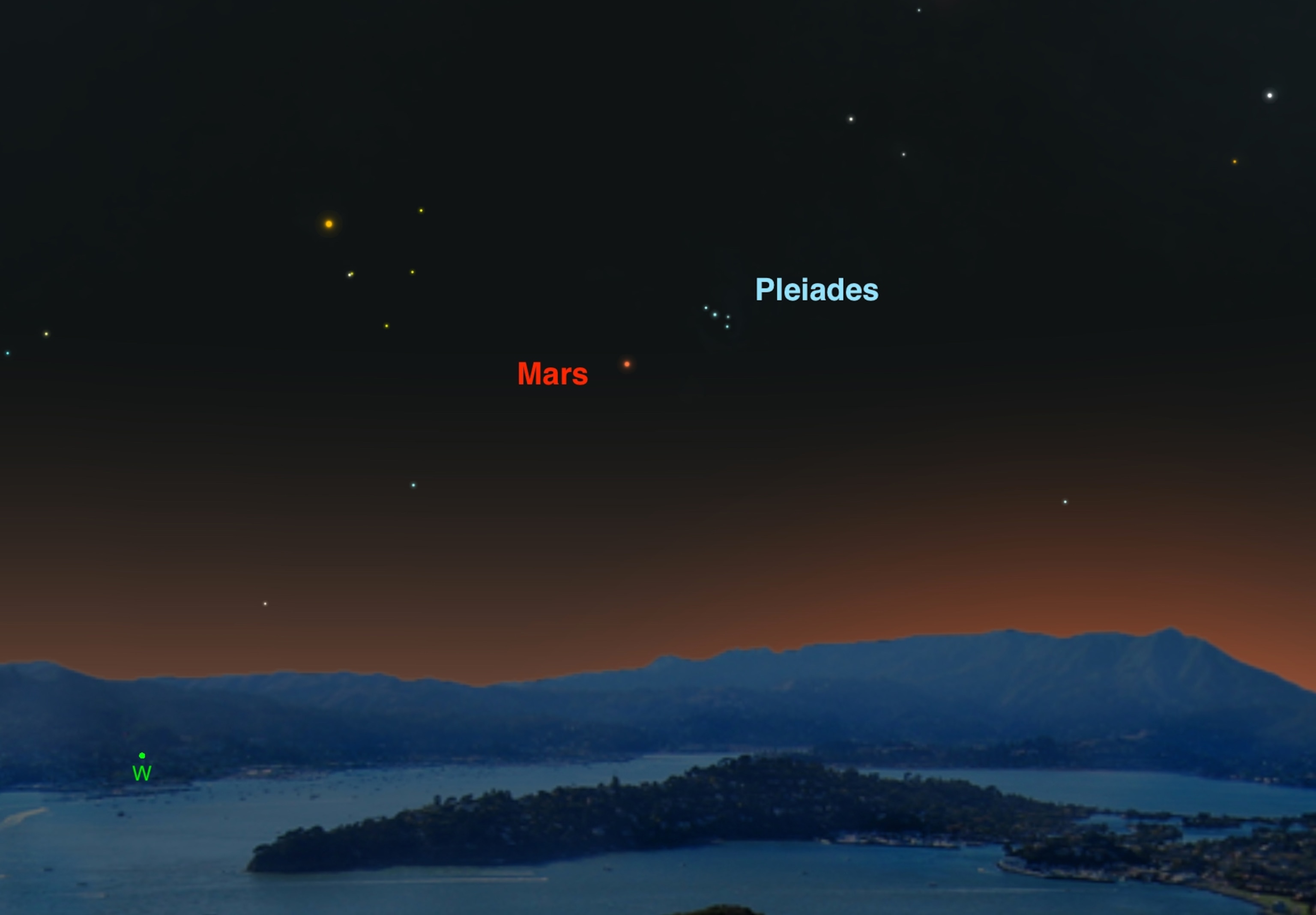
The Red Planet is slowly getting overwhelmed by the glow of evening twilight as it sinks closer to the western horizon, but tonight it glides past the well-known star cluster Pleiades.
The 360-light-year-distant stellar grouping, also known as the Seven Sisters, will appear only 3 degrees away from the planet in the sky.
Lyrid Meteor Shower Peaks—April 22
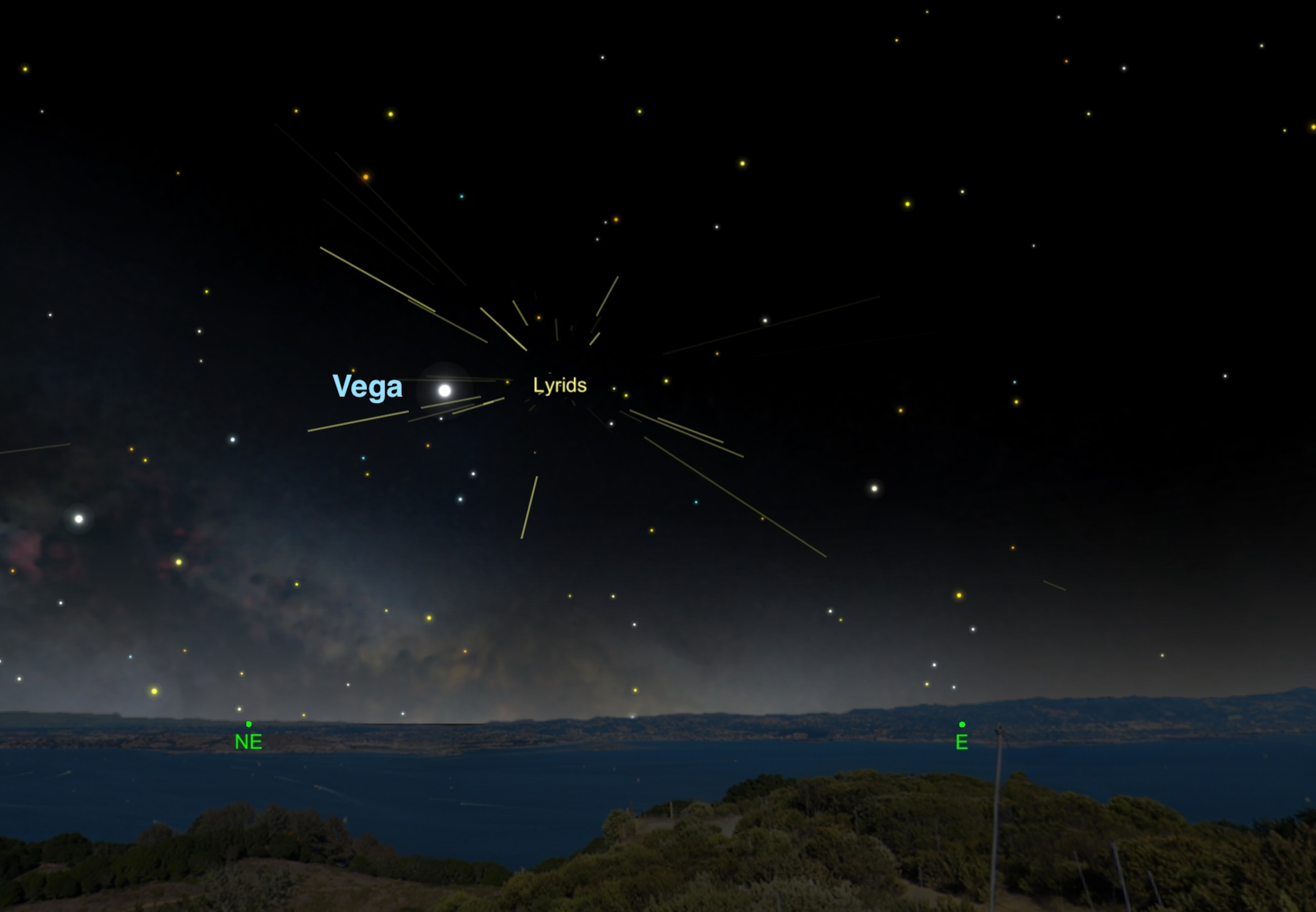
Stay up late on April 21, and look for a flurry of shooting stars streaming from the northeast sky near the constellation Lyra. The Lyrid meteor shower should peak starting after 11 p.m. local time, but promises to really kick in after midnight, when the moon will have set and left behind dark skies.
Until the pre-dawn hours on the morning of April 22, as many as 15 to 20 meteors per hour should be visible across the Northern Hemisphere in areas away from light-polluted cities.
Venus Alongside the Moon—April 23
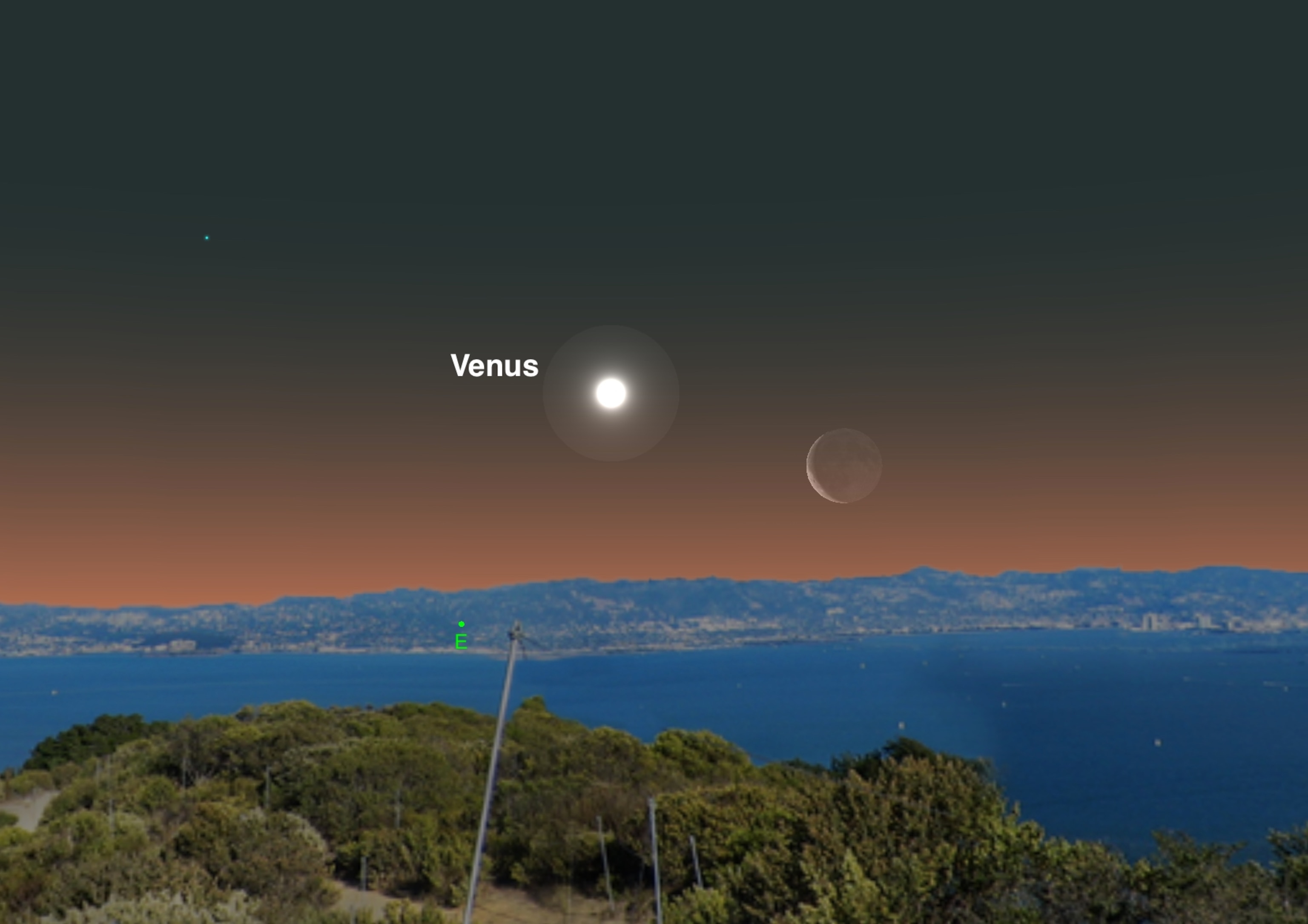
A great observing challenge awaits the early morning skywatcher as Venus pairs up with the crescent moon. Using binoculars to cut through the glow of morning twilight, look very low towards the eastern horizon about 45 minutes before sunrise for both the planet and moon.
Aldebaran Meets the Moon—April 28
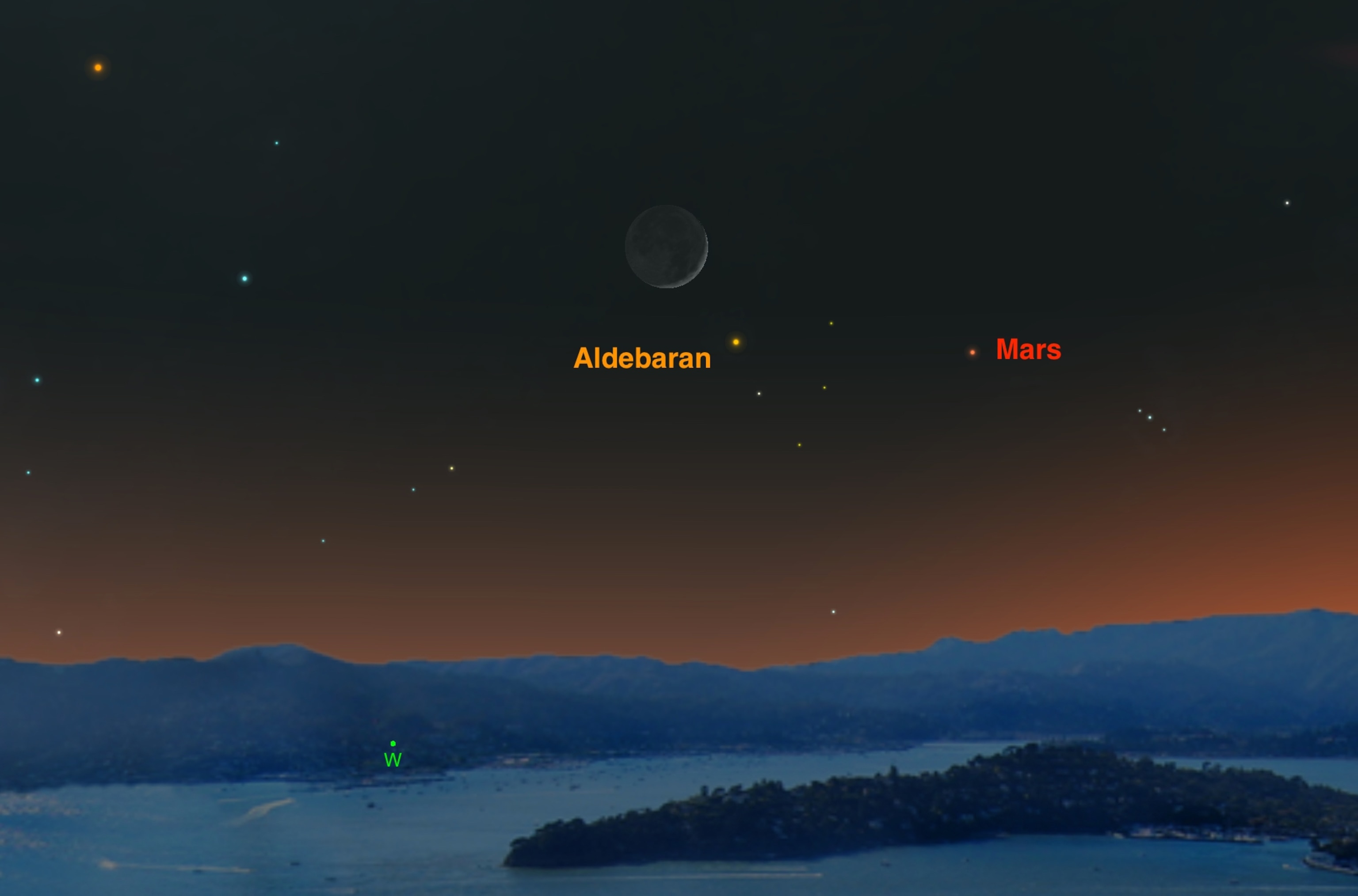
For the second time this month, the moon returns to the Taurus constellation and its brightest star, Aldebaran. The two objects will have an even closer encounter, appearing only a half degree from each other–about equal to the width of the full moon.
However, lucky skywatchers across Europe, North Africa, and North America will get a chance to see the star slip behind the moon in what is called a lunar occultation. For specific occultation times for cities around the world, check out this time table from the International Occultation Timing Association.
Clear skies!
(See a list of March's sky events.)
Andrew Fazekas, the Night Sky Guy, is the author of Star Trek: The Official Guide to Our Universe and host of NG Live! Mankind to Mars presentations. Follow him on Twitter, Facebook, and his website.

